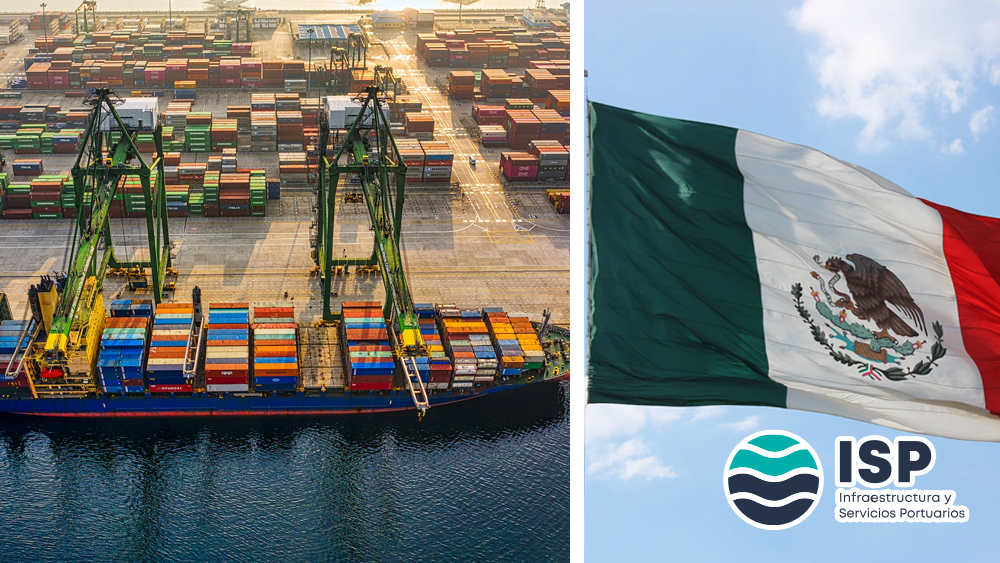Mexico is the eleventh largest exporter in the world, according to data from the World Trade Organization. Its international trade is 90% based on maritime transport, which makes its ports crucially important. With a total of 117 ports, distributed along its coasts in the Gulf of Mexico, the Pacific Ocean and the Caribbean Sea, Mexico connects with more than 145 countries, including economic powers such as China and the United States.
Of this extensive network, 65 ports are for commercial purposes, while the remaining 52 are dedicated to fishing, sports and tourism activities. However, 90% of the country’s foreign trade is concentrated in five specific ports: Port of Manzanillo, Port of Lázaro Cárdenas, Port of Veracruz, Port of Altamira and Port of Ensenada. These five enclaves form the core of the country’s foreign trade. But, what is the biggest shipping port in Mexico? In this article, we tell you.
Port of Ensenada: the biggest shipping port in Mexico
Located in the state of Baja California, the Port of Ensenada emerges as Mexico’s main seaport. Strategically positioned only 110 kilometers from the U.S. border, it is consolidated as a crucial gateway for trade between the two countries.
Geographic characteristics
Ensenada de Todos Santos is home to the Port of Ensenada, a bay that provides a safe haven for ships. With an extension of 15 kilometers and a depth that reaches 12 meters, this port has an optimal infrastructure to receive and ship goods efficiently and safely.
Cargo volume and destinations
The year 2022 marked a milestone in the port’s history by mobilizing a total of 3.4 million tons of cargo. Of these, 2.4 million were exports and 1 million were imports. The predominant products in exports are meat and agricultural products, while imports include manufactured goods, agricultural products and petroleum.
Employment and infrastructure
The Port of Ensenada is not only an economic powerhouse, but also an employment-generating engine. In 2022, it provided jobs for 2,000 people. It has an infrastructure that includes 16 piers, 11 gantry cranes and 5 mobile cranes, in addition to a storage capacity of 1.6 million tons. Connectivity with railroads and federal highways solidifies its relevance in the logistics landscape.
Global Contributions of Mexican Ports
Mexico’s seaports occupy a position of global relevance, driven by a number of fundamental factors. First, their strategic geographic location along the coasts of the Gulf of Mexico, the Pacific Ocean and the Caribbean Sea gives them unparalleled access to North American, Latin American and Asian markets.
In addition, the Mexican economy is characterized by its diversification, generating a wide range of products for export. From agricultural products to manufactured goods, energy and tourism goods, the country has established a solid presence in international markets.
Accompanying this economic diversification, Mexican ports have a modern and highly efficient infrastructure. They are capable of handling a wide variety of cargo, from containers to agricultural and energy products, ensuring an optimal logistical flow.
The impact of these elements on the national economy is undeniable. During 2022, Mexican ports mobilized an impressive 103.8 million tons of cargo, representing 90% of the country’s total foreign trade. This achievement reflects the magnitude of their contribution to Mexico’s economic development and their relevance in the global context.
ISP: the most reliable shipyard in the Port of Ensenada
Since 2010, Infraestructura y Servicios Portuarios (ISP) has been a key player in the maritime industry, with a special focus on the Port of Ensenada, Baja California. Part of the Amaya Curiel Group, ISP is the largest shipyard in the Mexican Pacific. With a solid environmental policy and rigorous quality standards, ISP offers a wide range of specialized services in repair, maintenance, recycling and shipbuilding.
Services Offered by ISP:
- Dry-docking of vessels.
- Shaft and rudder repairs.
- Propulsion systems inspection and services.
- Propeller repairs.
- Naval mechanics.
- Cleaning and services to sea intakes.
- Pressure washing with fresh water.
- Abrasive blasting at different levels.
- Surface preparation and paint application.
- Tank cleaning.
- Steel repairs with certified welders.
- General steel work.
- Lathe machining services.
- Electrical, carpentry and hydraulic services with highly qualified subcontractors.
- Ultrasonic inspection of plate thicknesses.
If you would like more information about ISP’s services, please do not hesitate to contact them. They are committed to satisfy your ship repair and maintenance needs.
